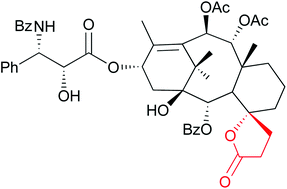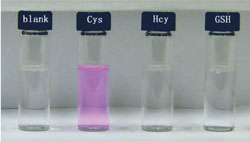This month sees the following articles in Organic & Biomolecular Chemistry that are in the top ten most accessed:
Imidazole derivatives: A comprehensive survey of their recognition properties
Pedro Molina, Alberto Tárraga and Francisco Otón
Org. Biomol. Chem., 2012, 10, 1711-1724
DOI: 10.1039/C2OB06808G
Copper(I)–amine metallo-organocatalyzed synthesis of carbo- and heterocyclic systems
Benjamin Montaignac, Victor Östlund, Maxime R. Vitale, Virgnie Ratovelomanana-Vidal and Véronique Michelet
Org. Biomol. Chem., 2012, 10, 2300-2306
DOI: 10.1039/C2OB06449A
Asymmetric organocatalytic formation of protected and unprotected tetroses under potentially prebiotic conditions
Laurence Burroughs, Paul A. Clarke, Henrietta Forintos, James A. R. Gilks, Christopher J. Hayes, Matthew E. Vale, William Wade and Myriam Zbytniewski
Org. Biomol. Chem., 2012, 10, 1565-1570
DOI: 10.1039/C1OB06798B
Facile synthesis of 4-substituted 3,4-dihydrocoumarins via an organocatalytic double decarboxylation process
Shiyong Peng, Lei Wang, Haibing Guo, Shaofa Sun and Jian Wang
Org. Biomol. Chem., 2012, 10, 2537-2541
DOI: 10.1039/C2OB25075F
On a so-called “kinetic anomeric effect” in chemical glycosylation
Ian Cumpstey
Org. Biomol. Chem., 2012, 10, 2503-2508
DOI: 10.1039/C2OB06696C
Olefin cross-metathesis for the synthesis of heteroaromatic compounds
Timothy J. Donohoe, John F. Bower and Louis K. M. Chan
Org. Biomol. Chem., 2012, 10, 1322-1328
DOI: 10.1039/C2OB06659A
Fluorogenic sensing of CH3CO2– and H2PO4– by ditopic receptor through conformational change
Nisar Ahmed, Vangaru Suresh, Bahareh Shirinfar, Inacrist Geronimo, Amita Bist, In-Chul Hwang and Kwang S. Kim
Org. Biomol. Chem., 2012, 10, 2094-2100
DOI: 10.1039/C2OB06994F
A selective fluorescent turn-on NIR probe for cysteine
Xin-Dong Jiang, Jian Zhang, Xiangmin Shao and Weili Zhao
Org. Biomol. Chem., 2012, 10, 1966-1968
DOI: 10.1039/C2OB07046D
Chemical generation of o-quinone monoimines for the rapid construction of 1,4-benzoxazine derivatives
Naganjaneyulu Bodipati and Rama Krishna Peddinti
Org. Biomol. Chem., 2012, 10, 1958-1961
DOI: 10.1039/C2OB06681E
Construction of highly functional α-amino nitriles via a novel multicomponent tandem organocatalytic reaction: a facile access to a-methylene γ-lactams
Feng Pan, Jian-Ming Chen, Zhe Zhuang, Yin-Zhi Fang, Sean Xiao-An Zhang and Wei-Wei Liao
Org. Biomol. Chem., 2012, 10, 2214-2217
DOI: 10.1039/C2OB07112F
Why not take a look at the articles today and blog your thoughts and comments below.
Fancy submitting an article to Organic & Biomolecular Chemistry? Then why not submit to us today or alternatively email us your suggestions.














